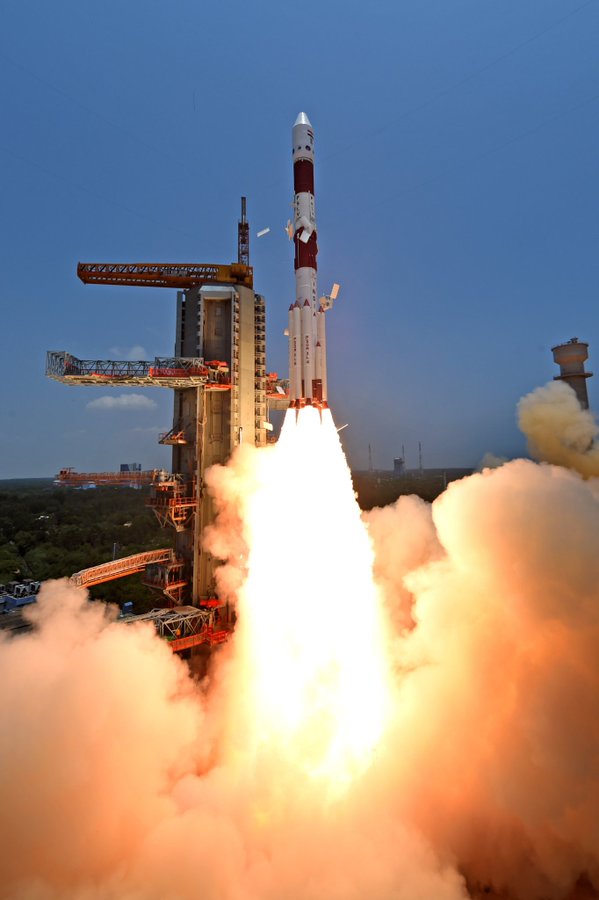Amid its Chandrayaan-3 mission to the Moon, India’s space agency launched another satellite and this one will study the Sun.
The spacecraft, called Aditya-L1, is bound for the Earth-Sun L1 Lagrange Point, located 1.5 million km from Earth. This will give it a perfect perspective to watch the Sun, similar to NASA’s SOHO mission. It will reach its destination in about three months and then use seven instruments to observe the Sun, its atmosphere, and the solar environment.
The successful launch for Aditya-L1 comes less than two weeks after ISRO (Indian Space Research Organization) made history by landing becoming the first to soft-land a spacecraft near the lunar south pole. The Chandrayaan-3 mission’s Vikram lander began sending back images from its surroundings shortly after touchdown. Then, the six-wheeled rover named Pragyan rolled down a ramp to begin its explorations, looking for evidence of ice and other minerals. The solar powered Chandrayaan-3 is currently ‘asleep’ due to lunar night. There’s a chance the lander could be re-powered once sunlight returns to the lunar south pole, around September 22, 2023.
Aditya-L1 launched from Sriharikota, an island off the Bay of Bengal on Saturday, September 2, 2023.

The spacecraft successfully performed a maneuver on September 5 to help it reach the correct orbit, making gradually larger orbits around Earth. The next maneuver is scheduled for September 10. Once the spacecraft reaches Sun-Earth L1 Lagrange point, it will be placed in a halo orbit around the point where the gravitational pull of both the Sun and Earth cancel each other out. This helps decrease fuel consumption and puts the spacecraft in an optimal position to study the Sun.
Some of the key objectives of the Aditya-L1 mission are:
- Study the dynamics of the Sun’s chromosphere and corona.
- Study the physics of chromospheric and coronal heating.
- Study the origin and evolution of coronal mass ejections.
- Study the physical particle environment around the L1 Lagrange point.
- Understand the drivers of space weather.

There are four instruments on board that will study the Sun, while three others will study solar wind particles and magnetic fields passing through at Lagrange point 1. The instruments include a Visible Emission Line Coronagraph(VELC), the Solar Ultraviolet Imaging Telescope (SUIT), the Solar Low Energy X-ray Spectrometer (SoLEXS), the High Energy L1 Orbiting X-ray Spectrometer(HEL1OS), the Aditya Solar wind Particle Experiment(ASPEX), the Plasma Analyser Package For Aditya (PAPA), and Advanced Tri-axial High Resolution Digital Magnetometers.
On the mission’s webpage, ISRO said, “The suit[e]s of Aditya L1 payloads are expected to provide most crucial information to understand the problem of coronal heating, coronal mass ejection, pre-flare and flare activities and their characteristics, dynamics of space weather, propagation of particle and fields.”
The Aditya-L1 mission marks a major milestone for ISRO. The latest update from ISRO indicates The satellite is healthy and operating nominally on its voyage.

